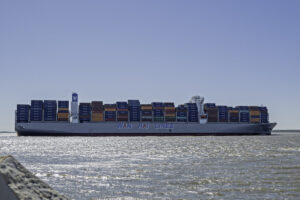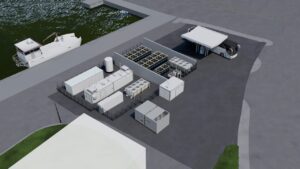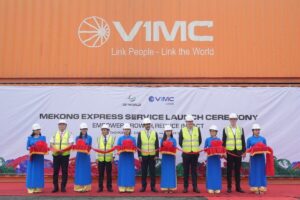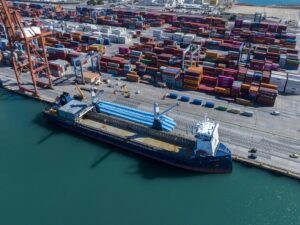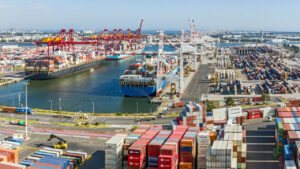Seago Line, Maersk’s intra-European short sea carrier, has introduced new vessels to its North Europe feeder link between Rotterdam in the Netherlands and St. Petersburg, Russia.
The next vessel in series will be Volga Maersk, which will be committed to serving the Russian market.
In the Russian Baltics, where harsh winters and icy waters pose challenges for container shipping, ice-class vessels bring a very important value proposition to the market.
Seago Line, the intra-Europe and short-sea carrier within Maersk, has recently taken delivery of Vistula Maersk, the first in its series of vessels purpose-built to serve the North Sea and Baltic Sea.
After successful trials, the vessel is now operating on the carrier’s feeder connection between The Netherlands and Russia and has made her maiden call to Petrolesport and First Container Terminal in St. Petersburg on April 20, 2018.
Søren Castbak, Seago Line’s CEO, said: “We are truly breaking the ice and offering year-round stable transportation solutions to our customers, who require a reliable service despite weather conditions.”
Vistula will shortly be joined by her sister unit Volga Maersk and these vessels will together be the only two to operate on the North Europe Feeder Link 1 service, ensuring consistency in tonnage and enhanced reliability throughout the year.
During the coming months, five other sisters — all announced bar one by the carrier as Vayenga Maersk, Venta Maersk, Vuoksi Maersk, Vilnia Maersk — will join Vistula and Volga in enhancing a number of Seago Line services in the North Sea and Baltic Sea.
Learn about the next stage of digitization and automation in the shipping sector by reading the latest Port Technology technical paper by Lars Jenson, CEO, SeaIntelligence
The new ships are the world’s largest ice-class container vessels, designed specifically for withstanding operations in winter conditions as cold as -25 degrees °C.
Apart from their stronger hull, they are characterized by high-refrigerated cargo intake with 600 reefer plugs as perishables make a large share of cargoes moved.
Some of the fresh commodities moved on the short-sea service — and soon to be carried by Vistula and Volga Maersk — include tomatoes, oranges and potatoes.
Castbak added: “This new class of vessels plays a vital role in our strategy of growing with our customers and building on our market leadership position within transport of refrigerated cargo.”
In 2017, Maersk added Moscow Maersk, a next-generation Triple-E vessel, to its North European fleet.
Castbak commented: “Vistula and Volga joining Seago Line’s fleet will soon be another symbol of our commitment to serving the Russian market and local customers.”
Vistula Maersk and Volga Maersk will operate on Seago Line’s L16/L01 service, which calls Rotterdam’s APM Terminals 1, Delta Container Terminal and APM Terminals Maasvlakte 2, before calling Port of Ust-Luga and then Petrolesport and First Container Terminal in St. Petersburg.




